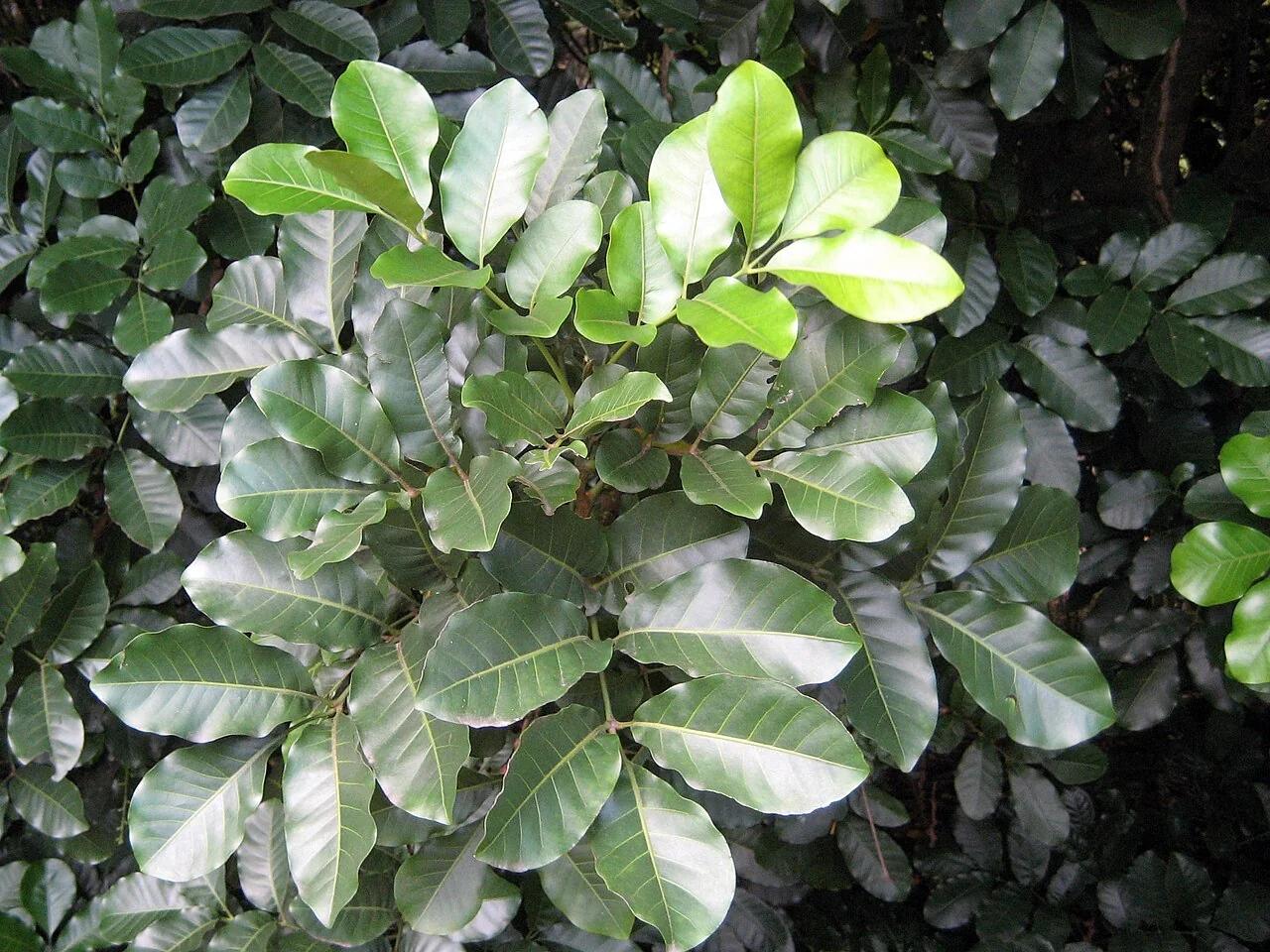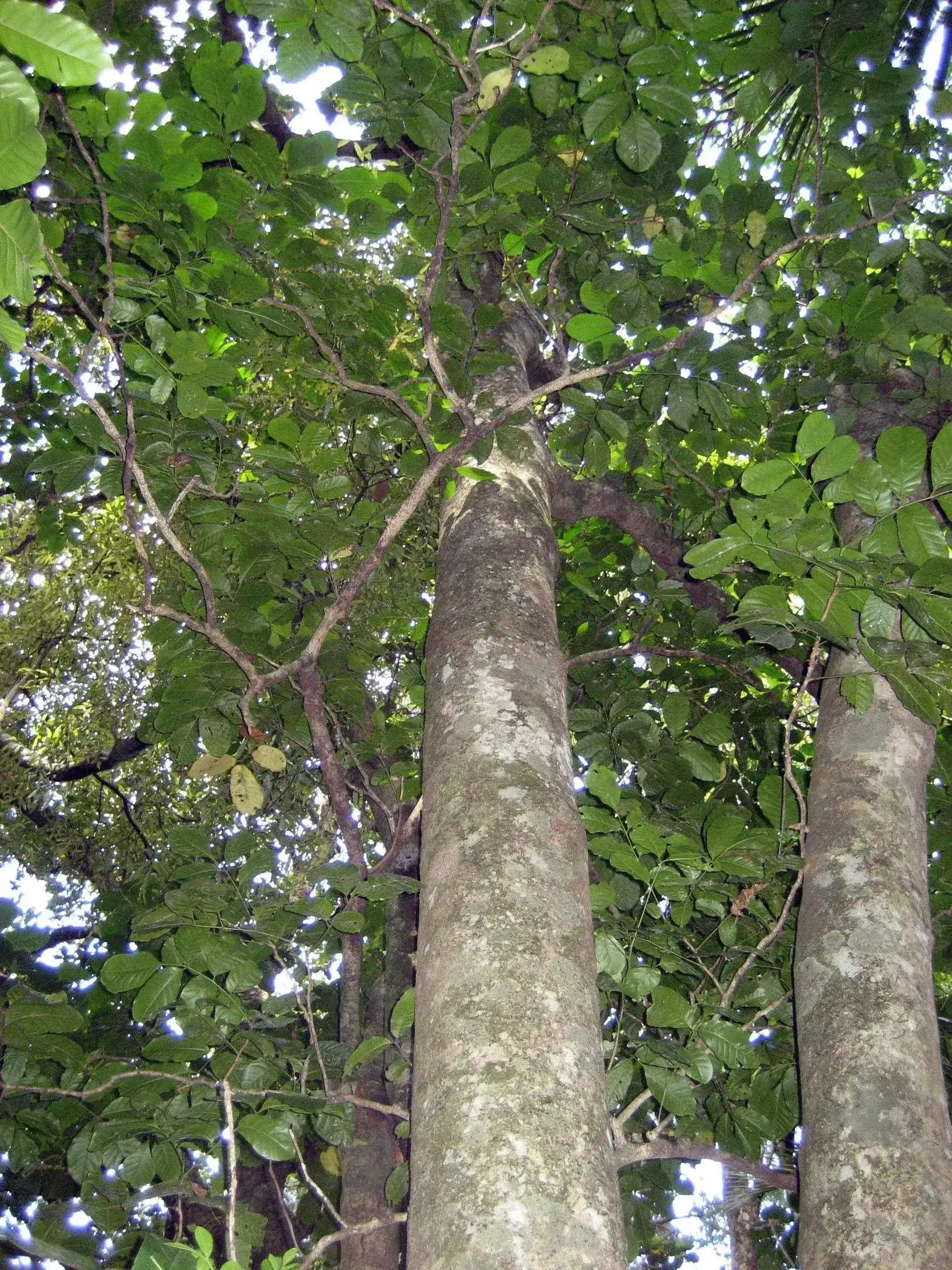
Kohekohe
Dysoxylum spectabile
Dysoxylum spectabile, commonly known as Kohekohe or New Zealand mahogany, is an evergreen canopy tree endemic to New Zealand. It typically grows up to 15 meters tall with a broad, spreading canopy and a trunk that can reach 1 meter in diameter, sometimes forming small buttresses at the base. native trees

Plant Description
The tree features coMāpound, glossy dark green leaves with 4-6 pairs of large, leathery leaflets and a terminal leaflet. From early autumn to mid-winter, Kohekohe produces small, sweetly fragrant, waxy white or greenish flowers directly from its trunk and branches, a characteristic known as cauliflory. These flowers develop into woody, orange capsules that split open to reveal scarlet seeds. The species is gynodioecious, meaning it has separate male and female flowers on different trees.
Quick Facts
| Scientific Name | Dysoxylum spectabile |
|---|---|
| Height | Up to 15m |
| Spread | Up to 10m |
| Water Needs | Moderate |
| Light | Partial shade to full sun |
| Frost Tolerance | Low |
| Salt Tolerance | High |
| Growth Rate | Moderate to fast |
| Lifespan | Long |
Climate Best Suited to
Kohekohe's natural habitat spans from North Cape to Nelson in New Zealand, thriving in coastal and lowland forests, particularly in warmer areas. It is well-adapted to windy coastal conditions.
Regional Suitability
| City | Climate Suitability |
|---|---|
| Whangārei | Ideal |
| Auckland | Ideal |
| Hamilton | Ideal |
| Tauranga | Ideal |
| Rotorua | Ideal |
| Gisborne | Ideal |
| New Plymouth | Ideal |
| Napier | Ideal |
| Whanganui | Ideal |
| Palmerston North | Ideal |
| Wellington | Ideal |
| Nelson | Ideal |
| Christchurch | Moderate |
| Dunedin | Moderate |
| Invercargill | Moderate |
Plant Habitat
Kohekohe's natural habitat spans from North Cape to Nelson in New Zealand, thriving in coastal and lowland forests, particularly in warmer areas. It is well-adapted to windy coastal conditions.
Plant Conservation
Currently, Dysoxylum spectabile is classified as "Not Threatened" in terms of conservation status. However, its regeneration is significantly impacted by introduced pests such as possums and rats. Possums defoliate the trees and heavily browse the flowers, reducing fruit set, while rats are major predators of its seeds. Active regeneration is primarily observed in areas where these pests are controlled or on pest-free offshore islands; without such control, the species is expected to decline in much of its natural range.
Growing Requirements
Soil Requirements
For successful cultivation, Kohekohe prefers a sheltered location with fertile, free-draining soil.
- Fertile, free-draining soil
Light Requirements
While it tolerates partial shade, it can adapt to full sun once established.
- Partial shade to full sun
Water Requirements
Regular watering is necessary during dry periods.
- Regular watering during dry periods
Planting Guide
Planting in autumn or spring promotes strong root development, and the tree exhibits a moderate to fast growth rate in favorable conditions. It typically reaches 8 to 15 meters in height and 4 to 6 meters in width, requiring adequate spacing for its mature spread. Propagation is primarily by seed, and both male and female trees are needed for fruit production.
Ecological Role
The flowers of Kohekohe are a food source for native birds and insects, while the berries are eaten by birds.
Uses & Significance
Garden Uses
Kohekohe is valued for its ornamental qualities and ecological benefits, making it suitable for specimen planting, screening, and revegetation projects.
- Specimen planting
- Screening
- Revegetation projects
The Māori name for this tree is Kohekohe. Its wood was traditionally used for various purposes.
- Māori name: Kohekohe
Ecological Value
The flowers and fruit of Kohekohe provide a valuable food source for native birds and insects.
- Food source for native birds and insects
Landscaping Uses
In a landscaping context, Kohekohe is a versatile tree that can be used as a specimen tree, in mixed borders, or in containers. Its architectural form and attractive foliage make it a popular choice for a variety of garden styles, particularly coastal and subtropical themes.
Seasonal Care Calendar
Spring
In spring, new growth will appear. This is a good time to apply a slow-release fertilizer.
- Apply slow-release fertilizer
Summer
During summer, regular watering is beneficial, especially during dry spells.
- Water regularly
Autumn
From early autumn to mid-winter, Kohekohe produces small, sweetly fragrant, waxy white or greenish flowers directly from its trunk and branches.
- Look for flowers
Winter
In winter, the plant is dormant. Protect from frost in cooler climates.
- Protect from frost
When to Prune and How Much
Pruning is not essential, but dead leaves can be removed.
- Remove dead leaves as needed
Always use clean, sharp tools for pruning to minimize the risk of disease.
How to Grow Kohekohe
From Seed
Kohekohe propagation from seed requires careful timing and patience, as this species is dioecious with separate male and female trees needed for fruit production. Seeds should be collected immediately when the distinctive woody orange capsules split open in late autumn to winter, revealing the bright scarlet-colored seeds with their attractive orange arils. Fresh seed is essential as viability decreases rapidly after harvesting, typically losing germination capacity within 2-3 weeks if not sown immediately. Remove the fleshy aril by gently washing under lukewarm water, taking care not to damage the hard seed coat beneath. Pre-treatment is often beneficial - either scarify the seed coat lightly with fine sandpaper or soak in warm water for 24 hours before sowing. Use a well-drained seed-raising mixture of equal parts sterilized potting mix, perlite, and fine bark chips. Sow seeds 1-2cm deep in individual pots or cellular trays, maintaining consistent moisture without waterlogging. Place in a warm, bright location with temperatures between 18-22°C and provide gentle bottom heat if available. Germination is notably slow and irregular, typically taking 3-6 months but can extend up to 12 months. Seedlings grow slowly initially and may take 2-3 years to reach suitable transplant size.
From Cuttings
Semi-hardwood cuttings provide a more reliable propagation method for Kohekohe, producing plants that maintain the characteristics of the parent tree. Take cuttings during late summer to early autumn when new growth has begun to harden but remains somewhat flexible. Select healthy, disease-free shoots 12-18cm long from the current season's growth, avoiding both very soft growing tips and fully hardened wood. Make cuts just below a node using clean, sharp secateurs, and remove all leaves from the lower two-thirds of the cutting to reduce moisture loss. Strip bark carefully from the bottom 2-3cm of the cutting to expose the cambium layer, which encourages root development. Apply rooting hormone containing IBA (indole-3-butyric acid) at 4000-6000ppm concentration, ensuring even coverage of the treated area. Insert cuttings into a propagation medium consisting of 60% perlite and 40% peat moss or coconut coir, ensuring good drainage while maintaining consistent moisture. Provide high humidity using a propagation tent or misting system, maintaining temperatures between 20-24°C with gentle bottom heat. Root development typically occurs within 8-12 weeks, indicated by new shoot growth and resistance when gently tugged. Once well-established, gradually acclimatize cuttings to normal growing conditions over 4-6 weeks before transplanting.
Pests & Diseases
Dysoxylum spectabile is generally resistant to most pests and diseases. However, its regeneration is significantly impacted by introduced pests such as possums and rats. Possums defoliate the trees and heavily browse the flowers, reducing fruit set, while rats are major predators of its seeds.
Cultural Significance
Kohekohe (Dysoxylum spectabile) is a taonga coastal forest tree. In Mātauranga Māori it is noted for abundant winter flowering that feeds birds, and the bark has been referenced historically in rongoÄā. The tree features in coastal restoration and retains prominence in cultural landscapes of Te Ika-a-Māui.
- Important nectar source for manu in winter
- Bark referenced in traditional rongoÄā sources
- Taonga tree within coastal forest restoration
Bonus Tip
Kohekohe is one of the few New Zealand native trees that exhibits cauliflory, meaning it produces flowers directly from its trunk and branches.
